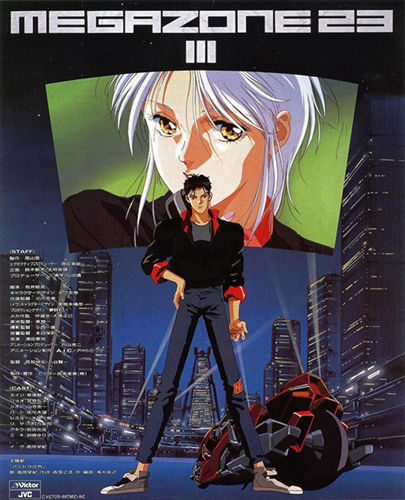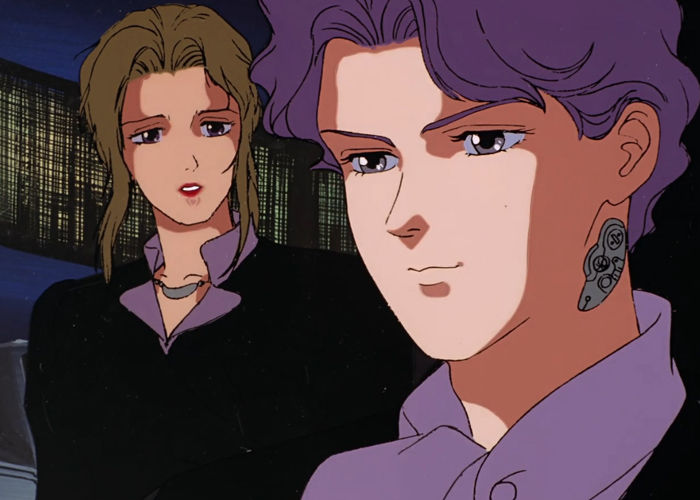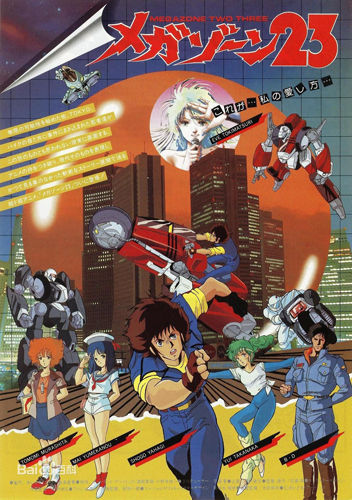Anime ● Review: Megazone 23 Part III
- Very Average Joe
- Apr 30, 2024
- 3 min read
English Title: Megazone 23 Part 3: Some Secrets Never Die
Japanese Title: メガゾーン23パート3 いくつかの秘密は決して死なない
Director(s): Aramaki Shinji & Yatagai Kenichi
Screenwriter(s): Arii Emu
Studio: Artland, Artmic
Released: 1989
Runtime: 2 episodes, ~51m each.
Starring: Kusao Takeshi, Takaoka Saki, Kasahara Hiroko, Ataka Makoto, Yamadera Kouichi, Doi Mika
My Verdict: Better execution than the first two parts but plotting is somewhat clumsy.

● Part 3 is set presumably a few centuries after the end of Part 2 and features mostly a new set of characters. (The timing is revealed later in the narrative.) Eden is the only city on Earth, a manmade paradise that is managed by an AI referred to as the “System” under an organization called E=X. The System does require human operators.
● The System works by monitoring and forecasting everything, obviously making Eden a surveillance state without overtly coming across as a police state, in the hopes of making everyone happy. One can see that Shirow Masamune’s Appleseed, first released before Part 1 in 1985, is probably an influence. One can also see that works such as Appleseed and Megazone 23 have no doubt inspired the likes of Psycho-Pass.
● The main character is Eiji who is a skilled hacker and gamer recruited by E=X to counter “net-jackers”, those who hack into the “System” to disrupt its operations and cause trouble.
● In short, the story follows Eiji as he participates in the conflict between E=X and the rebel hackers who want to bring down the System and Eiji uses the special red bike E=X provides. Of course, behind the System is the AI as seen in Part 1 and Part 2.


● Some of the problems in the first two parts are repeated. The pacing can be tighter and certain events or details pop up with insufficient explanation. One can understand what the writer is attempting to convey but it does at times come across as a little random.
● There is no exposition on what E=X is exactly and how the entity under Jakob came to power. There is another company named Orange involved in the conflict. Indeed, there are many companies although they are merely mentioned. The social commentary regarding the power of corporations is appreciated but it is rather superficial.
● One of the rebel hackers is named Sion (or Zion), which is interesting. [Potential Spoiler] The rebel hackers are initially presented as the bad guys but are not, so Sion is a good guy trying to fix the world. The point is not subtle.
● Gaming is a big part of Eden’s culture, at least amongst the younger generation. There is a simulator game called Hard On—no, I am not making that up—which is used as a recruiting and training tool by E=X and Orange. This is a much more interesting point considering this was back in the 1980s.
● The other major weakness is the characters. Eiji is not a bad character. He is a little cocky but not annoyingly so and he is at least not stubborn. He is not an outright “cyberpunk” although some of his friends are. In other words, the writer is trying to do something a little different and take a more balanced approach compared to the previous two parts.
● However, the other characters are two-dimensional if not just mere token characters. His love interest, Ryo, doesn’t do anything knowing both Eiji and Sion and taking a shower because the female lead has to take a shower. Jakob is the stereotypical scheming CEO with Miura as the high-level attractive blonde trying to keep him in check. Sion is the “cool bad guy with decency” who ultimately doesn’t do much either.

● The art design is improved in Part 3 which is expected given a few years have passed since Part 2. Everything from the mechanical design to the city to the computer terminals and screens has great detail and is nicely drawn. Visually, the overall production is more refined (not that Part 1 and Part 2 are bad).
● Thematically, it builds on the previous two parts. It is not an in-depth exploration of the human condition but it touches on the problems humans cause. Thankfully, as cheesy as it is, it does not dwell on some anti-war or climate change message even though it hints as these issues.
● Ultimately, it is a plot-driven story, which is fine, but the characters need to be more active or a little more interesting. Like the first two parts, the overall pacing can be tighter and the plotting can use more care as it is somewhat clumsy at times. That said, the execution is better than the first two parts and the ending is fitting enough even if it lacks an epilogue.
Be sure to subscribe to our mailing list so you get each new Opinyun that comes out!






Comments